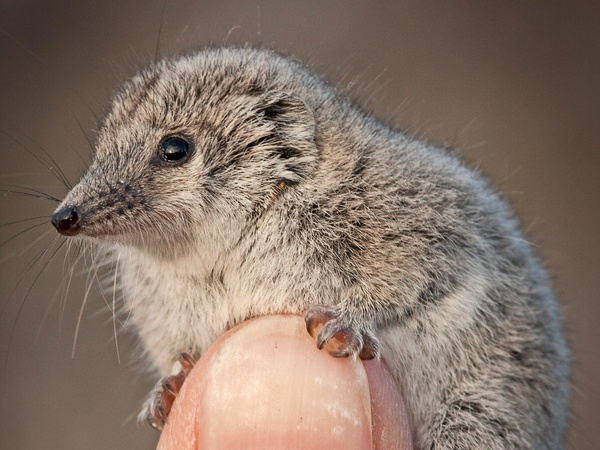Move over Skippy, we have a contender for the cutest little marsupial around.
The Gile's Planigale (also known as 'Paucident Planigale') has brindled, cinnamon-grey fur, a triangular face and is similar in size to a match box.

Photo by Gerhard Koertner
Resembling a mouse, these native little creatures are nocturnal, so you'll need to stay up late to find one, although they are also known to enjoy sunbaking in winter-time. They are carnivorous and feed mainly on larger invertebrates such as spiders, centipedes, scorpions and beetles.
In Victoria, you'll find them in the Mallee in the far north west, within the Lindsay-Mulcra-Wallpolla icon site in the Murray Sunset National Park. They're typically found in healthy black box woodlands which feature dense lignum understorey.
The deep, cracking floodplain clays are a favourite of the planigales who use them for protection from extreme temperatures and predators. These cracks also house some of the larger invertebrates they like to eat providing the planigales with a great place to forage for food.
Unfortunately, planigales are listed as a threatened species under the Flora and Fauna Guarantee Act (FFG) 1988. Changes in flooding regimes, the clearing woodland areas, reduced natural regeneration, selective grazing, firewood removal, recreation activities, vehicle tracks, and introduced predators, such as foxes and feral cats have all contributed to their 'near threatened' status in Victoria.
So how can we help the Gile's Planigale?
One of the ways you can help the Gile's Planigale is by supporting the delivery of environmental water to wetlands and creeks.
River red gums and black box plant communities within the Lindsay Mulcra and Wallpolla floodplain vary in condition and health. Environmental watering improves floodplain tree health and creates conditions that are beneficial to vegetative reproduction (buds, flowers and fruits).
Improved tree condition is also associated with improved litter accumulation (leaves, twigs, bark etc.). Collectively, this healthy, reproductive vegetation, combined with high litter loads attracts an increased diversity and density of insects which provide food for animals such as the Gile's Planigale.
For more information about water for the environment in the Mallee Region contact the Mallee CMA.
Article Reference: Mallee CMA, Mallee Catchment Facts - Gile's Planigale